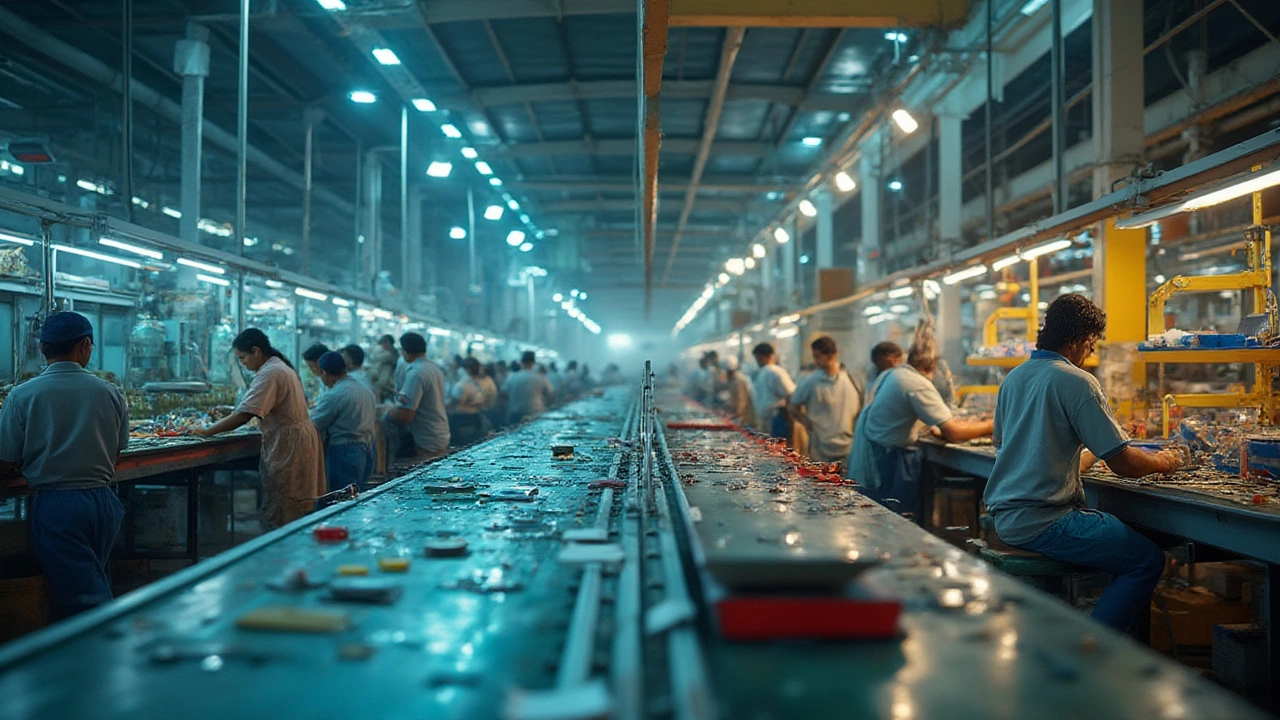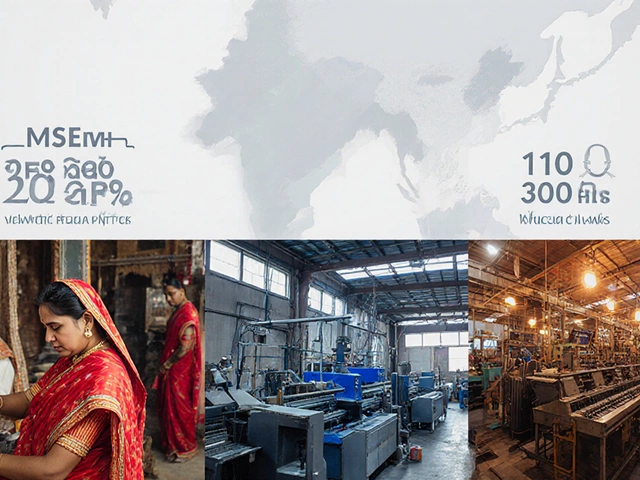Who knew that the way your shampoo and your smartphone get made comes down to just two basic types of manufacturing? Everything from the cookies in your kid’s lunchbox to the engine in your car starts with a choice: do you build lots of unique things, or make massive batches of the same thing? The answer decides how everything rolls off the assembly line—or gets poured and packed. Most people don’t realize how much rides on whether a factory runs like a giant bakery mixing dough or operates more like a high-tech Lego set putting pieces together one by one. The difference shapes entire industries, impacts product costs, and even affects how fast new tech finds its way into your hands.
The Big Divide: Process Manufacturing vs Discrete Manufacturing
If you ask ten people on the street what ‘types of manufacturing’ means, half will probably mutter something about ‘factories’ and change the subject. But chances are, every single thing in your house—right down to that jar of peanut butter hiding at the back of the fridge—came from one of two main methods: process manufacturing or discrete manufacturing. These two approaches set the basic rules for how stuff gets made, shipped, and eventually, tossed out or recycled (hopefully by folks like my son Vihaan, who once tried to recycle his old math book).
Let’s break them down. Process manufacturing is all about blending, mixing, or transforming raw materials into a final product that you can’t really take apart again. Imagine making tomato sauce: once everything’s mixed and cooked, good luck trying to get that garlic or basil out again. The result is usually loose, powdery, gooey, or liquid—think chemicals, paint, soda, or even medicines. Giant tanks, pipes, and vats are the stars behind the scenes here. This style dominates everywhere you find food processing plants, drug makers, oil refineries, and even steel mills. Process manufacturing relies on formulas and recipes more than kits of parts.
On the other hand, discrete manufacturing makes things you could—in theory—take apart, fix, or even upgrade. Cars, laptops, washing machines, and bicycles are prime examples. My daughter Kavya’s robot from her science project? Pure discrete manufacturing in action. Here, factories brim with bolts, gears, wires, and circuit boards coming together on assembly lines. The steps are clear—pick a part, stick it in, screw something down. If you’ve ever opened up your old phone to find a mess of tiny parts, that’s discrete manufacturing staring you in the face. Each finished item is usually counted individually ("we made 1,000 phones today!").
One famous quote sums it up:
"Process manufacturing turns raw ingredients into indistinguishable products, while discrete manufacturing combines unique parts to make unique items." — American Society of Mechanical Engineers (ASME)
The split between process and discrete decides everything from which machines factories buy to how they hire and train workers. Companies pick their path based on what they want to make—and how much people will pay for it. Swapping from one method to the other isn’t easy. That’s why you rarely see a car factory suddenly churning out frozen pizzas, or a soft drink plant switching to TVs overnight.

Real Life Examples: Everyday Products Explained
Okay—let's make this real. When you start your morning brushing your teeth, squeezing toothpaste from the tube, you're in process manufacturing territory. That stuff is mixed in giant vats, flavored, colored, and pumped into tubes millions at a time. No two tubes are exactly alike inside, since it’s blended in vast batches. But hop into your car to drop the kids off at school—that’s discrete manufacturing. Your car came together part by part, each with its serial number tracked just in case a headlight needs swapping.
Even everyday foods draw the line clearly. Bread, juice, cookies—all made in massive factories that use strict recipes, scaling up what you might do at home to the level of a thousand loaves a shift. These are process manufacturing products. But buy a toaster to brown those slices, and you’re holding a discrete product—one where the heating coils, plastic cover, timer, and cord can all be found on a parts list somewhere.
This divide explains why process factories favor jobs like chemical engineers and quality assurance techs to keep recipes consistent. Discrete makers, meanwhile, need supply chain managers counting bolts, assembly line workers with nimble fingers, and mechanics for breakdowns. The skills and tools rarely overlap. An assembly line robot meant for snapping wheels onto cars wouldn’t know what to do with a vat of breakfast cereal.
Curious what happens when you buy toys, gadgets—or even that scented candle your spouse picked out? Behind every item is a hidden world of process and discrete choices. No wonder some of the biggest companies on earth, like Coca-Cola (process) and Apple (discrete), have factories that look nothing alike on the inside. Their equipment, their quality checks, and even their waste products are totally different.
Want a fun example of how this shapes our world? Remember the global chip shortage a few years back. Semiconductor fabs use process manufacturing to etch microscopic circuits onto silicon wafers, and a single hiccup can ripple across carmakers, phone companies, and even washing machine factories—because all those industries rely on small, process-made chips to run their discrete machines. It’s a weird little dance: process manufacturing feeds discrete manufacturing, often without most folks realizing.
If you’ve ever had a favorite soda or snack suddenly change flavor, you’ve seen the pain of getting a process formula wrong. With discrete goods, the danger comes when a batch of parts—say, defective airbags—gets built into thousands of cars before anyone realizes. Both have massive recalls, but their causes look very different up close.

Picking Sides: Why Choosing the Right Manufacturing Type Matters
This is where the rubber meets the road, as my dad used to say. Manufacturers don’t pick process or discrete styles on a whim—they decide based on what market they want to serve, what resources they have, and how flexible they need to be. If you’re about to launch a startup, or maybe just daydreaming about opening a factory yourself one day, here are some smart ways to sort out which path fits your plan.
Process manufacturing thrives when you need to pump out identical items by the truckload. It’s unbeatable for basic foods, chemicals, paints, medicines, or anything else the world uses in bulk. But it ties you down to formulas—change just one ingredient, and your whole set-up might need adjusting. That’s why process plants invest big-time in quality control labs and skilled operators who know the recipes inside out.
Discrete manufacturing shines when customers want variety and upgrades. Cars, electronics, furniture, and even custom machinery all get their edge when users ask for options. Discrete lines can pivot pretty fast—build Model A in the morning, switch to Model B by lunch (as long as the parts are in stock). But this flexibility comes with headaches: every single piece must fit perfectly, and supply chain snarls can wreak havoc if one tiny screw goes missing.
Tips? If you’re in food processing, don’t skimp on tracking batches and ingredient sources. Recalls move fast—being able to say which lot used which batch of oil or flour can save you a fortune (and maybe your reputation). For discrete makers, supercharge your inventory system so you never find out too late that you’re missing a $2 plug that holds up $500 laptops. Think about modular designs—if you make furniture, for example, designing sofas with swappable arms or cushions lets you offer more choices without reinventing the wheel.
Another lesser-known fact: the green revolution in manufacturing is hitting process and discrete styles differently. Process factories, especially chemical plants, are under pressure to recycle water, cut emissions, and switch to cleaner raw materials. Discrete makers are going all-in on modular products that are easier to repair and recycle—think electronics with batteries that pop out, or cars designed for easy upgrades instead of junking the whole thing.
A good rule: always study the market and look for hidden gains. Are your customers super price-sensitive, or do they value custom options? Is your product more about recipes or part lists? Big brands like Unilever (process) and Toyota (discrete) each became world leaders by leaning hard into the strengths of their chosen style. And when in doubt, talk to someone who works on the factory floor—sometimes, just asking how they solve daily problems will tell you more than any textbook.
The next time you pick up a bottle of shampoo or plug in your new mixer, take a second to guess: was this blended into a batch, or is it a masterpiece of parts coming together? Most of us never think about it—but those quiet choices behind the scenes make all the difference in what ends up in your shopping cart.





